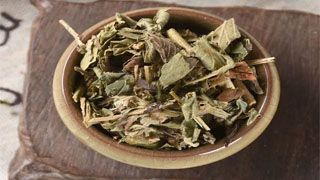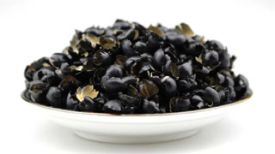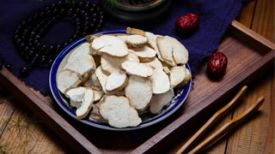
1. Aliases
Wolf Tooth, Wolf Tooth, Wolf Tooth Seed, Crane Grass Root Sprouts.2. Plant morphology
Perennial herbaceous plant, 30-120 centimeters tall. Odd pinnate compound leaves alternate, stipules sickle shaped, sparsely ovate, apex acute or acuminate, edges with acute serrations or lobes, sparsely entire; There are two types of leaflets, one in size and the other on the leaf axis. The larger leaflets are 3-4 pairs, sparse 2 pairs, and decrease to 3 leaflets upwards. The leaflets are almost sessile, obovate to obovate lanceolate, 1.5-5 cm long and 1-2.5 cm wide. The apex is acute to blunt, sparse gradually acute, and the base is wedge-shaped. The edge has acute to blunt serrations, green on the top, sparsely pubescent, and light green on the bottom. The veins are covered with sparse pubescence, sparse shedding without hair, and there are significant glandular spots. The raceme is single or 2-3 borne at the top of the stem; Bracts usually 3-lobed, lobes banded, bracts opposite, ovate; Sepals 5, triangular ovate; Petals 5, oblong, yellow; Stamens 5-15; Style 2, filamentous, stigma head shaped. Achenes are ovoid conical, with 10 ribs on the outside, sparsely pilose, and several layers of hooked spines at the tip. They are upright when young and close inward when mature. The flowering and fruiting period is from May to December.
3. Origin distribution
Born by streams, roadsides, grasslands, shrubs, forest edges, and sparse forests. Distributed throughout the north and south of our country.
4. Harvesting and processing
Before the germination of new plants in spring, dig out the roots and stems, remove the old roots, leave young shoots (with small roots and stems), wash and dry in the sun, or dry at low temperature.
5. Characteristics of medicinal herbs
This product is conical in shape, often curved in the middle and upper parts, with a total length of 2-6 centimeters and a diameter of 0.5-1 centimeters. The top is covered with several light brown membranous bud scales. The rhizome is shortened, cylindrical, and 1-3 centimeters long. The surface is brownish brown with tight circular nodes, and there are brown black degenerated scales on the nodes. Sometimes, a small number of adventitious roots remain in the lower part of the rhizome. The root and shoot are brittle and fragile, with a flat and yellow white cross-section after fracture. Slight odor, slightly bean like, with a slightly sweet taste followed by astringency and bitterness.
6. Nature, taste, and meridian tropism
Cold in nature, bitter and astringent in taste. There is no meridian.
7. Effect and function
Deworming, detoxifying, and reducing swelling. Blood activating and pain relieving drugs belonging to the subcategory of blood activating and stasis removing drugs.
8. Clinical applications
Internal administration: decoction, 10-30 grams; At the end of the year, 15-30 grams, children weigh 0.7-0.8 grams per 1 kilogram of body weight. External use: In moderation, boil and wash with water; Or mash and apply fresh products. Indicating tapeworm disease, vaginal trichomoniasis, sores and scabies, boils and swelling, and red white dysentery.
9. Pharmacological research
Hecao phenol mainly acts on the head segment of tapeworms, and also has effects on the neck and body segments. It can inhibit the glycogen breakdown of the worm body, significantly inhibit the anaerobic and aerobic metabolism of the worm body cells, and the production of succinic acid, a metabolic product of the worm body cells; Hecao phenol has the effect of promoting the migration of schistosomes in animals, causing their bodies to shrink, degenerate, and even kill adults; It has a long-lasting stimulating effect on roundworms, and also has inhibitory and killing effects on vaginal trichomonas, schistosomiasis, malaria parasites, cysticercosis, etc.
10. Chemical composition
Containing hesperidol, hesperidol, apigenin, catechol, tannins, etc.
11. Taboos for use
When using Hecao sprouts to treat tapeworm disease, it is necessary to grind the powder and take it. Water decoction is ineffective. Powder has a laxative effect, so there is no need to take laxatives anymore. If there are side effects such as nausea, vomiting, and dizziness during oral administration, it can be restored after stopping the medication.
12. Compatibility prescription
① Treatment for white worms: 150g wolf teeth, crushed into powder, honey balls as big as sesame seeds. Sleeping without food, Ming Dan will merge under the water with the pulp and drink it all. (From "Waitai" to "Fan Wangfang")
② Treating women with ulcers, erosion, itching, or pain in the genital area: 50g wolf teeth, decoct with water to remove impurities, dip in degreased cotton, soak in the genital area, once in the morning and once in the evening. (Synopsis of the Golden Chamber)
③ To treat vaginal ulcers in women, it is recommended to boil 150g of wolf teeth in four liters of water until one liter is reached. Remove any impurities, mix water and vinegar, and boil for a while. Heat up slightly, then dip cotton into the soup and drain it onto the ulcer, then pour it in hot water. Three to five degrees a day will heal. (Wolf Tooth Soup from "Shenghui Fang")
④ Treatment of tapeworm disease: Cut off the sprouts of crane grass, soak them in water, rub off the outer skin of the roots and stems, and dry them in the sun. Adults should weigh 30 grams, children should reduce it, and once in the morning on an empty stomach should be given hot water. (Sichuan Journal of Traditional Chinese Medicine, 1979)
⑤ Treatment of children's head swelling: 240 grams of fresh crane grass sprouts, some glutinous rice to cook Congee, to remove the residue. Take one dose of sugar (without adding oil or salt) daily, 3-5 doses in a row. (Sichuan Journal of Traditional Chinese Medicine, 1979)


